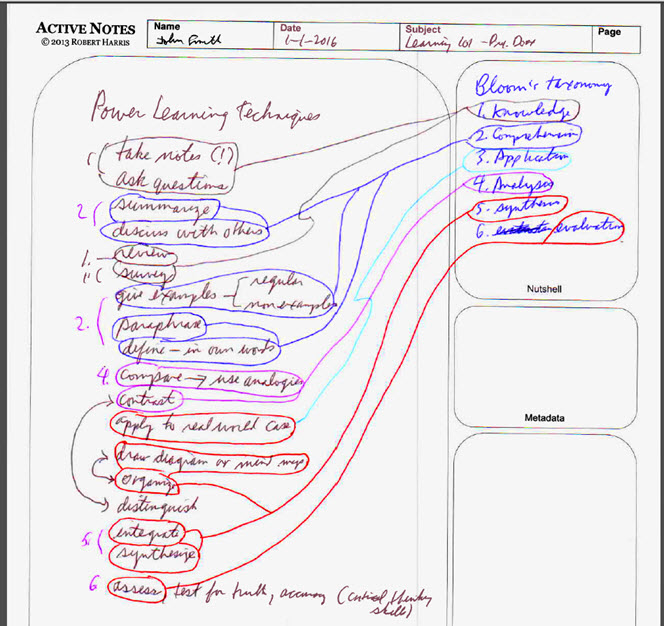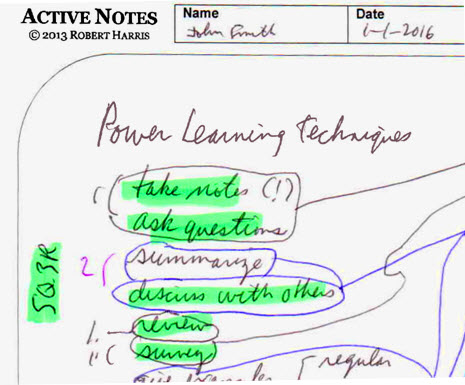Description
Idea linking is a learning strategy that takes a set of notes (from lecture, reading, viewing video) and organizes them to reveal categories, commonalities, contrasts–any kind of relationships that will make comprehension of the whole easier. In other words, Idea Linking aims at finding the Big Picture in the mass of details.
Idea linking has some similarities to content analysis, which combines repetition of words or concepts and which looks for synonyms to determine the frequency of occurrence of the same or similar ideas. But idea linking goes beyond that into the construction of an organizational scheme or outline, sometimes creating a sort of idea map from the “raw” notes.
Idea linking also allows you to create nonlinear, cross idea connections in a way that a starndard outine will not. See Learning Strategy 14: Idea Mapping for more information.
Method
The method is to match similar concepts and information points into a larger, coherent thematic structure. That is, look at the notes or ideas and see if you can find several related or interrelated themes which can be used to organize the ideas. The thought is that it’s easier to remember three main themes from an hour talk than it is to remember, say 20 individual items.
Example
Here is an example case where a student applied Bloom’s Taxonomy of cognitive categories to his lecture notes in a education class about “Power Learning Techniques.” The student wanted to apply an organizing framework to the seemingly random techniques identfied by the professor. And secondly, the student was curious to learn which cognitive level or levels the recommended techniques employed.

The linking of the concepts together
by Bloom’s levels reveals that
- the professor supplied techniques that cover all six levels of Bloom
- the discussion–in hindsight–was not random, but presented the techniques generally in the rising order of task complexity (from low level to higher level)
Later, on further review, the student discovered that another organizational scheme could be applied to some of the techniques. The SQ3R reading method (Survey, Question, Read, Review, Recite) was more or less presented in the techniques highlighted as shown below. The student equated survey=survey, question=ask questions, read=take notes, recite=discuss with others, and review=review.

Now, of course you do not need to identify an existing organizational structure such as Bloom’s Taxonomy or the SQ3R method. You can create one from a memorable acronym and fit the parts to it, or you can simply group the individual concepts into grander themes that the groupings indicate.
Ideally, the notes should be reorganized and rewritten on a clean sheet of paper, reflecting the arrangement and conclusions you identify.
![]()
Learning Strategy 15: Drawing Pictures suggests using drawings as powerful aids to memory because of how much more efficiently the brain processes images than text. As an organizational scheme for an idea linking project, link the ideas under pictures or icons or symbols that will supply a visual memory stimulus. Then discuss your idea links with a friend or classmate.